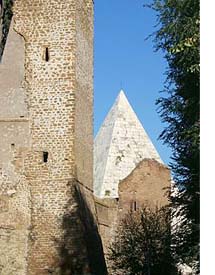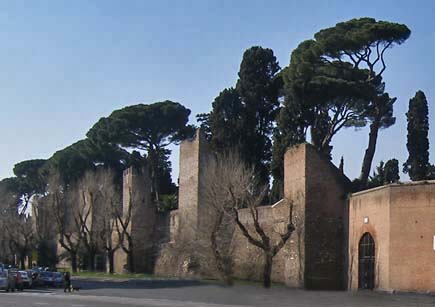The Wall, built in brick, is provided with square-plan towers every 100 feet (29.60m) and with numerous entrance gates, often double-arched, flanked by semicircular towers; minor gates (posterulae) gave access in the stretches between towers.
The town walls underwent various restorations and renovations: in the time of the Emperor Maxentius (306-312), when work that was never completed was also started on a ditch; then under Honorius and Arcadius between 401 and 402 to confront the attacks of the Goths; and finally during the VIth century the work of Belisarius (505-565). Thus reinforced and restored the walls have resisted until 1870, as a bulwark for a last time in the conflict between the Pontifical troops and the Italian army. .
|
|
 Their
construction was
carried out in great
haste, making use
also of numerous
pre-existing monuments,
for example the built
tomb known as the
Pyramid of Cestius.
Their
construction was
carried out in great
haste, making use
also of numerous
pre-existing monuments,
for example the built
tomb known as the
Pyramid of Cestius.

